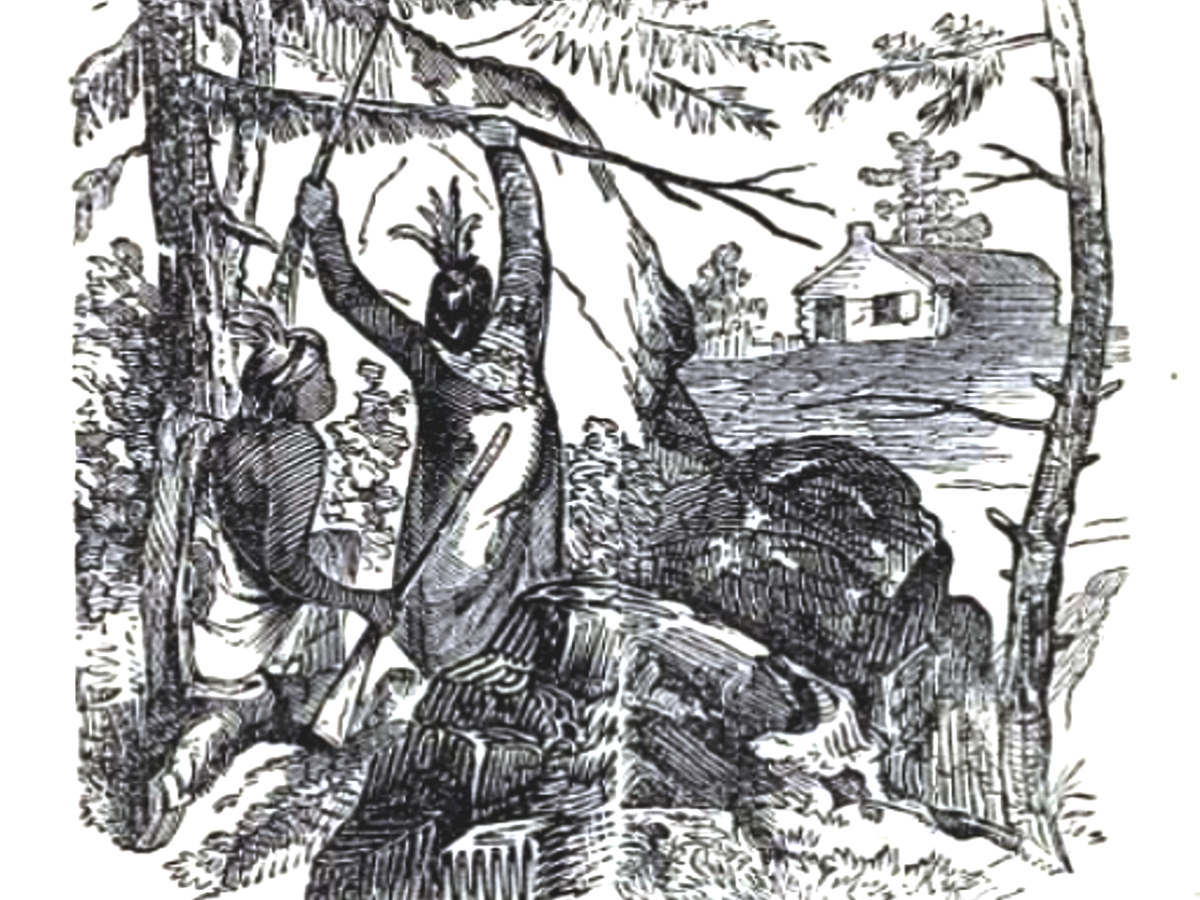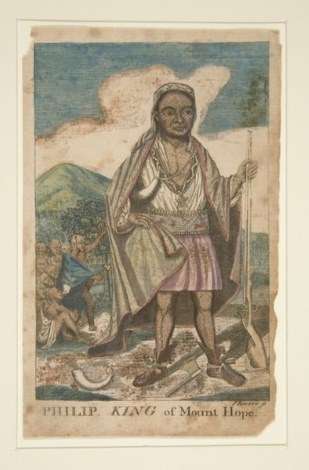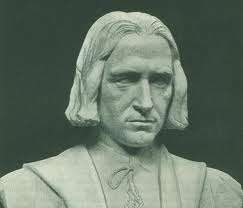On March 29, 1676, old Roger Williams was one of 30 men who remained in the town of Providence. Most of the population had taken refuge on Aquidneck Island, rightly fearing an attack from indigenous people. It was the midst of King Philip’s War, and Roger Williams tried to stop the bloodshed. He was 77 years old.
That day, Native Americans roamed Providence unmolested as they set fire to houses, barns, sheds and churches. They burned Roger Williams’ home, though he had long been their friend.
Williams sent an ominous letter to his brother, then staying on Aquidneck Island.
[P]repare forts for women and children at Newport and on the island or it will be shortly worse with you than us.
King Philip’s War
No U.S. war was as catastrophic as King Philip’s War. For 55 years, New England colonists had lived in peace with the Native Americans. But then Plymouth Colony grabbed too much land, subjected them to a humiliating peace treaty and hanged three Wampanoags.
War broke out.
Metacomet, also known as King Philip, led the rebellion. He was the son of Massasoit, the sachem who had negotiated a peace treaty with the Mayflower Pilgrims.
Native Americans attacked nearly half the towns in New England, but it was all over after 14 months of fighting. Philip was dead, his head displayed in Plymouth Colony for 20 years. As many as a thousand indigenous people were sold into slavery, and 5,000 were killed in battle, of sickness or starvation. Another 2,000 fled west or north. At the outset of the war, Native Americans comprised 30 percent of New England’s population; by the end, they were down to 15 percent.
King Philip’s War devastated New England. Plymouth Colony lost 8 percent of its adult male population. Compare that to the Civil War, in which less than 5 percent of the country’s men died.
The New England economy suffered, and it would take a century before per capita income rose to its level before the war.
Before the bloodshed, there had been about 100 towns in New England; afterward, only about 65, the rest having been burned or abandoned.
Great Swamp Massacre
Old Roger Williams did his best to stanch the bloodshed. As the colony’s leader, he and Rhode Island’s largest tribe, the Narragansetts, tried to stay out of the escalating violence.
Williams had consistently upheld Native rights. He bought land from them, instead of appropriating it, and he learned their language, publishing a guide to it in 1643, A Key Into the Language of America.
At the outset of King Philip’s War, the Narragansetts had signed a treaty of neutrality with Massachusetts Bay Colony.
Knowing this, King Philip sent the women, children and infirm from warring tribes to safety with the Narragansetts. But a 1,000-man militia from three colonies – Plymouth, Massachusetts and Connecticut – invaded Rhode Island and massacred the Narragansett winter settlement in the Great Swamp, now South Kingstown. Seven hundred indigenous men, women and children died in agony.
The Narragansetts had no choice but to go to war. The Narragansett sachem Canonchet assembled an army that attacked towns in Central Massachusetts, Rhode Island and, finally, Providence.
Old Roger Williams
As Providence burned, a group of Native Americans from several tribes assembled on the banks of a salt cove across from the town. Williams walked out to talk with them across the water, his back to the burning town.
The conversation between the warriors and the old minister lasted an hour.
Roger Williams asked them why they burned and killed their kind neighbors. He told them,
This house of mine now burning before mine eyes hath lodged kindly some thousands of you these ten years.
They said Rhode Island had joined the other colonies in the Great Swamp massacre.
In a letter to his brother, Williams recounted his reply:
I told them they … had forgot they were mankind and ran around the country like wolves tearing the innocent and peacable….They confessed they were in a strange way.
Roger Williams then warned them that it was almost time to plant. The Indians said they didn’t care about planting; they would take food from the English. They argued some more, and finally Williams suggested he intervene to make peace.
The Native Americans said they would spend the next month burning Plymouth Colony, and then they would talk to him.
But they never used Rogers Williams’ services as a peacemaker. They did, however, tell him the safe way home.
Old Roger Williams lived for another seven years.
With thanks to Mayflower: A Story of Courage, Community and War by Nathaniel Philbrick. This story was updated in 2023.





17 comments
This would explain why many women were married more than once or lived with other family members or worked 4 other people. Thank U 4 thiS Information.
[…] Edward Bumpus was sentenced to death for ‘striking and abusing’ his parents in 1679, but because he was judged insane he only received a severe whipping. The death penalty was also administered to the alleged killers of a Praying Indian named John Sassamon in 1675, setting off King Philip's War. […]
[…] “[O]r we may think of him as a successful warrior safely returned from a secret participation in King Philip's war, and afterwards buried in the spoils which he had stripped from a fallen […]
[…] it goes down hill from there, recounting Massachusetts' expulsion of Roger Williams, John Adams' imposition of the alien and sedition acts, the region's opposition to westward […]
[…] months of bloody fighting in King Philip’s War, the English defeated the Wampanoags in August 1676. While trying to escape from them, Weetamoo […]
[…] Somerby, Judith's son by her first husband, died at 25 fighting King Philip’s War in 1675. That same year Enoch Coffin died at the age of 12. John Coffin followed his half-brother […]
[…] Wampanoag Indians survived to resist the colonists' land grab during King Philip’s War in […]
[…] then on, depopulation no longer threatened New England’s existence (though King Philip’s War […]
[…] argue the Little Ice Age also created the conditions for King Philip’s War 40 years later. The cooler climate reduced crop yield, so the colonists demanded more and more […]
[…] did he follow the Quaker religion, he employed two Indians. People viewed them with unease because King Philip’s War had ended only four years […]
[…] the traditional seat of the Wampanoag Indians, Benjamin Church killed King Philip nearby. The colonists then confiscated the land, and the wealthy merchant and slave owner Isaac Royall, […]
[…] On the wooded grounds of an old monastery in Cumberland, R.I., a pile of stones stands next to a cement pillar with a plaque on it. Called Nine Men’s Misery, people describe it as the oldest veteran’s memorial in the United States. It commemorates the death of nine men killed by Narragansett Indians during King Philip's War. […]
[…] Smith, Jr., built it in 1678, after Narragansett Indians burned down the previous house during King Philip’s War. Smith fortified the big old colonial with two small cannons, thus earning the name “Smith’s […]
[…] then, King Philip's War broke […]
[…] went to work as a merchant and goldsmith to support himself. He married the granddaughter of Roger Williams, Mary Hart. After doing so, he decided to go to […]
[…] King Philip’s War, Indians attacked Hadley. According to legend, all seemed lost until a powerful-looking old man […]
[…] rival, the less-fanatical Rev. William Hubbard, believed the Puritans’ land grabbing caused King Philip’s War. Hubbard also thought military ineptitude and overconfidence prolonged the […]
Comments are closed.